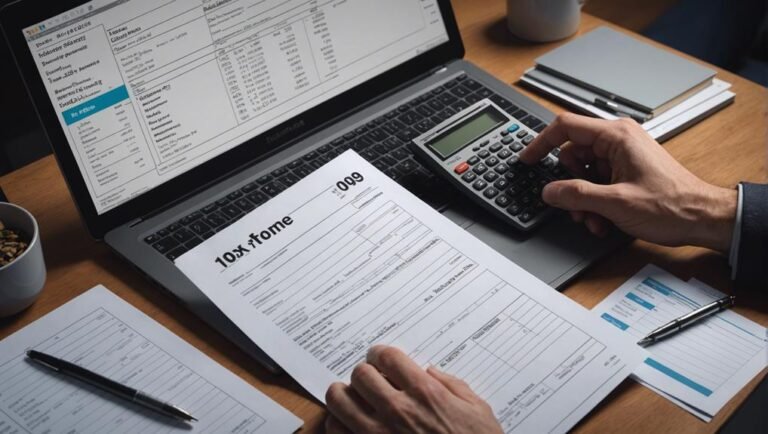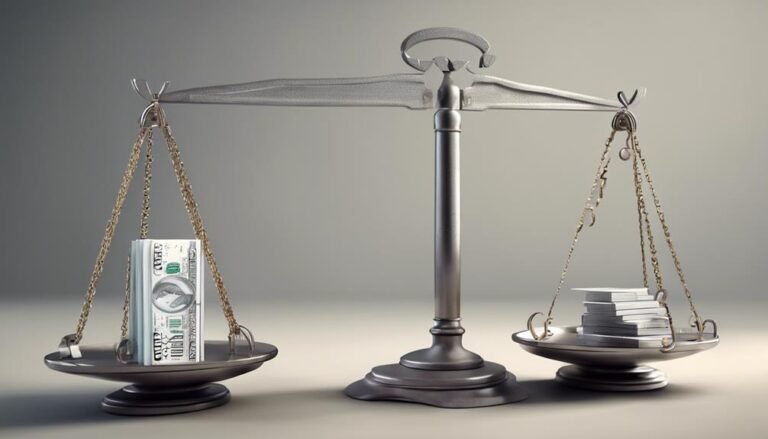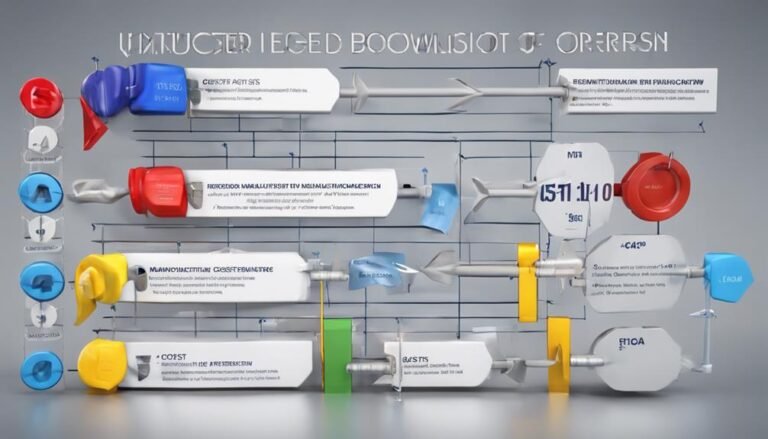Bankruptcy Explained: Types and How It Works
Bankruptcy in the U.S. follows a legal process evaluating assets for repayment and determining filing eligibility. Types like Chapter 11 and Chapter 13 offer unique debt relief strategies. Debtor rights and discharge play essential roles, but not all debts can be discharged. Consider pros like debt forgiveness but beware of lasting credit impacts. Bankruptcy lasts 7-10 years on credit reports. Explore alternatives or seek legal help for a smoother process. Bankruptcy's financial effects can be long-term. Learn about various types and impacts to make informed decisions about handling financial challenges.
Key Takeaways
- Bankruptcy types include Chapter 11 for reorganizations.
- Chapter 13 offers debt repayment plans for individuals.
- Discharge in bankruptcy forgives certain debts.
- Bankruptcy impacts credit reports for 7-10 years.
- Legal procedures and accurate disclosure are vital in bankruptcy.
Bankruptcy Basics
Bankruptcy, a legal process for individuals or businesses overwhelmed by debt, offers a fresh start by evaluating assets for potential repayment under the U.S. Bankruptcy Code in federal courts. When contemplating bankruptcy, it's crucial to comprehend bankruptcy exemptions and eligibility criteria.
Bankruptcy exemptions allow you to safeguard certain assets from being used to repay debts, ensuring you have a foundation to rebuild your financial stability. Eligibility requirements determine who can file for bankruptcy and under what chapter.
Additionally, debt relief is a crucial aspect of bankruptcy, providing individuals or businesses with the opportunity to restructure or eliminate debts through asset evaluation. By analyzing your financial situation accurately, you can navigate the bankruptcy process more effectively and work towards a debt-free future.
Types of Bankruptcy
When considering financial restructuring options, understanding the different types of bankruptcy filings can provide clarity on the specific paths available for debt relief and repayment strategies. Bankruptcy filings are categorized by various chapters under the Bankruptcy Code. Here is a breakdown of two common types:
| Type | Description |
|---|---|
| Chapter 11 | Primarily for company or individual reorganizations. It allows for a reorganization plan that involves restructuring debts to keep the business operating while repaying creditors. This type aims to facilitate the continuation of the business while addressing financial obligations. |
| Debt Repayment Plans | Under Chapter 13 bankruptcy, debt repayment plans are arranged with specific strategies for individuals to pay off their debts over a defined period. This type enables debtors to restructure their finances and fulfill their repayment obligations in a manageable manner. |
Discharge and Creditors
Considering the implications of debt relief and repayment strategies, understanding the discharge process and the role of creditors is essential in the context of bankruptcy proceedings. Debtor rights are important in the discharge phase, as it relieves debtors from specific financial obligations. However, not all debts qualify for discharge, such as tax claims or child support.
Secured creditors still retain the right to enforce liens on the debtor's property even after discharge. Additionally, creditors can object to discharge, triggering adversary proceedings where the court decides on the validity of the objections. Being aware of debtor rights and potential creditor objections is crucial for a thorough understanding of the bankruptcy discharge process.
Pros and Cons
Understanding the advantages and disadvantages of bankruptcy is essential for effectively managing financial challenges. One of the main advantages is the potential for debt forgiveness and a fresh start. However, it's vital to contemplate the impact on your credit reports and the difficulty you may face in future borrowing.
While bankruptcy can offer relief, it can also have long-term consequences on your ability to secure loans or credit cards. A bankruptcy filing can remain on your credit report for 7-10 years, affecting your credit score and making it harder to access favorable borrowing terms.
Before opting for bankruptcy, weigh the benefits against the potential challenges it may pose for your financial future.
Bankruptcy Alternatives
Bankruptcy alternatives offer individuals and businesses various strategies to address financial challenges without resorting to formal bankruptcy proceedings. Negotiation strategies play a key role in these alternatives, allowing debtors to work with creditors to find mutually agreeable solutions to repay debts.
Mortgage refinancing is another common alternative that can help lower monthly payments or interest rates, providing some relief for individuals struggling with mortgage debt. By exploring these alternatives, you may be able to avoid the immediate negative impacts on credit scores associated with bankruptcy.
However, it's essential to weigh the pros and cons of each option carefully to determine the best course of action for your specific financial situation.
Legal Procedures
What legal steps are involved in the bankruptcy process?
When maneuvering the legal procedures of bankruptcy, it's essential to be aware of the following:
- Hiring an attorney to guide you through the process and represent your interests in court.
- Understanding courtroom etiquette to guarantee respectful and appropriate behavior during legal proceedings.
- Disclosing all financial information and assets accurately to the court.
- Paying attorney fees, which can vary based on the complexity of your case and the attorney's experience.
- Following the legal timeline and requirements set forth by the U.S. Bankruptcy Code to ensure a smooth and efficient bankruptcy process.
Financial Impact
To understand the full impact of bankruptcy on your finances, it's important to assess how it influences your long-term financial stability and opportunities for recovery.
Bankruptcy can have immediate negative effects on your credit scores, leading to challenges in accessing credit or loans in the future. It may stay on your credit report for 7-10 years, affecting your financial credibility.
Additionally, bankruptcy can impact your investment strategies. Investors may witness fluctuations in stock values, changes in capital structure, and potential losses in Chapter 11 cases. However, bankruptcy can also present profit opportunities and be a platform for successful company comebacks.
Considering these financial implications is vital when evaluating the decision to file for bankruptcy.
Conclusion
In summary, bankruptcy can be a beneficial but burdensome process. Understanding its types and implications is essential.
Consider consulting with a professional to navigate the complexities of bankruptcy. Remember, risks and rewards come hand in hand. Choose wisely.







